How to properly remove mounting foam from the skin of the hands
When working with mounting foam, even the most experienced craftsmen using personal protective equipment can get dirty. For those who work with this tool for the first time, the foam will surely fall on their hands. But not everyone knows how to remove it from the skin.
To avoid getting foam on your hands, you need to work with this material in protective gloves. But even when using overalls, it sometimes gets on the skin and you have to decide how to wash the mounting foam from your hands.
Some sources suggest that before work, generously lubricate your hands with petroleum jelly or a greasy cream, to which the foam does not stick well, and it will not be difficult to remove it. But nowhere is it described how convenient it is when all the tools slip out of the hands, and how difficult it is to clean everything that was taken and touched with greasy hands.
Methods for removing liquid building foam
If mounting foam gets on the skin, you should try to remove it as soon as possible. In no case should you smear this product on your hand. We must try to remove the contamination with a clean napkin or cloth, shifting the mass to the center of the stain. The rest should be washed off. But this must be done before the composition hardens.
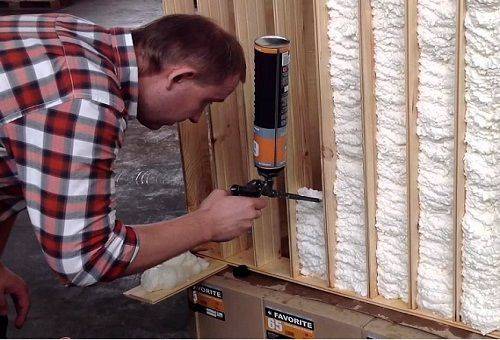
There are several ways to wash mounting foam from your hands:
- Before starting work, it is advisable to stock up on a special solvent aerosol. Ideally, it should be from the same manufacturer as the foam can. The aerosol is applied to the contaminated area, and then washed off with plenty of water. Such solvents usually do well with liquid foam, but are powerless in front of the frozen one.
- You can remove the uncured mass with an acetone-based solvent. With a cloth dipped in a solvent, you need to quickly but thoroughly wipe off the foam, and then wash your hands well with soap and water.
- This sealant is easy to wash off with kerosene. If none of the above turned out to be, then you can try to remove this sealant from the skin with improvised means that are always available at home.
- You can wipe off the foam well with a napkin moistened with slightly warmed vegetable oil. This product is harmless to the body. If you have patience and hold the oil in a contaminated place for 20-30 minutes, then it will be able to remove even the remnants of the hardened foam.
- It is enough to clean your hands of traces of sealant with ordinary table salt. It is necessary to gently rub it with contaminated places, and then wash your hands with soap and water.
- On the Internet there is a recommendation to use the drug "Dimexide". Indeed, this drug dissolves building foam well, but you can’t use it to clean your hands! "Dimexide" is well absorbed and enters the human body through the skin. Like any medicine, it has side effects and its use without a doctor's prescription and supervision is highly undesirable.
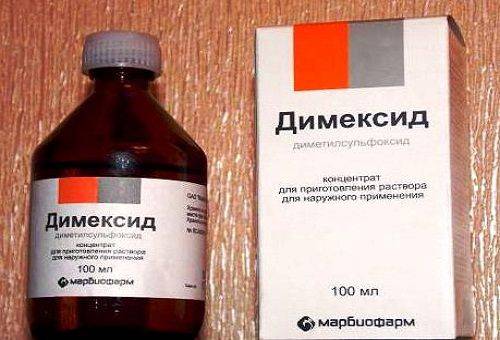
With this tool, you can clean walls and furniture, or remove foam drops from the floor.
How to get rid of the frozen mass
If immediately after contact with the hands, the mounting foam could not be cleaned off, then it will harden. It is much more difficult to deal with a frozen mass, since solvents no longer act on it (as the instructions for use warn about). In this case, it is possible to clear the skin of contamination only by mechanical action. For this you need:
- Lubricate the soiled areas with plenty of cream or sunflower oil. This will soften the effect on the skin somewhat during the removal of the foam.
- Lather liberally with a pumice stone or a stiff brush.
- Trying to injure the skin next to the contamination as little as possible, gently, slowly, clean off the hardened mixture.
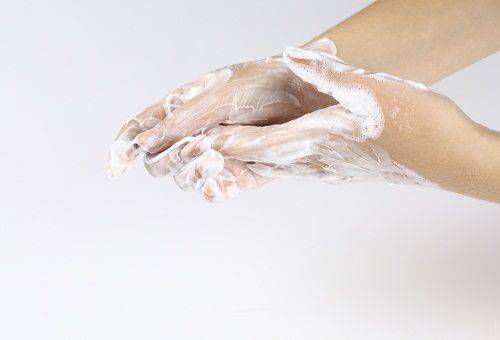
To achieve a greater effect, hands can be pre-steamed in hot water for 10 minutes before cleaning.
After these procedures are completed, it is advisable to lubricate the skin of the hands with a greasy cream.
If for one reason or another it was not possible to cope with traces of construction foam on the hands, then there is no need to worry much. After a few days, the pollution will peel off on its own from the skin, as skin cells are constantly being renewed.
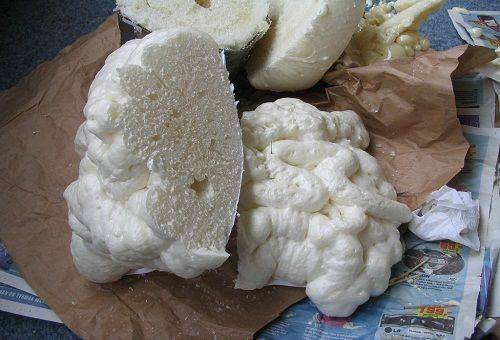
Do not use substances containing alkalis or acids (acetic acid, Domestos, etc.) to combat such stains. They will not cope with traces of sealant, and burns on the hands can remain for a long time.
During the cleaning of hands from mounting foam in any way, they are affected by chemical or physical methods. Therefore, after the procedure, it is worth taking care of the skin. Hands should be lubricated with a nourishing cream. It is desirable that it has regenerating and antiseptic properties (for example, with aloe or ginseng juice).
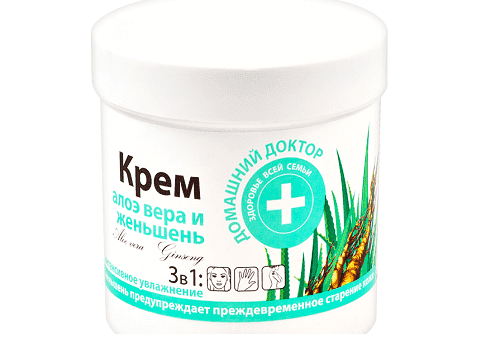
Preparing to work with construction foam
In order to significantly reduce the likelihood of mounting foam getting on your hands, clothes, furniture and floor, you should prepare in advance for this type of work:
- Be sure to wear gloves and goggles.
- Clothing should be used such that it will not be a pity to throw it away, because it is unlikely that it will be possible to wash off the frozen composition.
- Be sure to wear a hat. Most often, you can remove foam from your hair only with your hair.
- Covering material for furniture and floors should also be disposable (cardboard, plastic films).
- Special cleaning products that can be purchased along with mounting foam will not be superfluous. They can easily wipe off random stains.
- It is advisable to carry out work with an assistant who can close the through holes with cardboard or planks, cover nearby objects, and substitute protection under an overhanging drop.
By following these simple rules, you can get the job done quickly and with minimal hassle.
Excess weight is dangerous to health!
Excess weight is not just an aesthetic problem, it is a health problem. Proven by doctors - every 10 kg. excess weight shorten a person's life by 3-5 years. It has also been proven that everyone can lose weight, you only need ...
